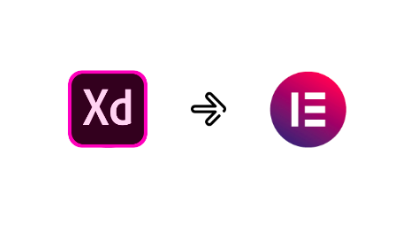The seamless integration of Figma and WordPress has revolutionized the way designers and developers approach their projects. By combining the power of Figma’s design capabilities with the versatility of WordPress, you can now create stunning websites that captivate your audience. In this Figma to WordPress article, we will delve into the wealth of resources available when you integrate Figma with WordPress.
Contents
Understanding Figma and WordPress
Figma is a cutting-edge cloud-based design tool that has taken the design community by storm. Its intuitive interface and real-time collaboration features make it a top choice for designers. Figma allows you to create and share design projects effortlessly, streamlining your design workflow.
WordPress, on the other hand, is the leading content management system. It is renowned for its user-friendly interface and extensive plugin ecosystem. WordPress provides a flexible platform for building websites of all kinds.
Read: Web Design Outsourcing: Elevate Your Business With Expert Design Services
Leveraging Figma Resources for WordPress
- Figma boasts an extensive library of design elements, including icons, illustrations, and UI components. By utilizing these resources in your Figma designs, you can ensure consistency and visual appeal across your WordPress website.
- Apart from the built-in design elements, Figma allows you to create and save your custom resources. Whether it’s a unique logo or a stylized font, these resources can be easily integrated into your WordPress site, adding a touch of personalization.
- Figma Styles enable you to create design systems that maintain consistency throughout your projects. When you integrate these styles into WordPress, you can ensure that your website’s design remains cohesive and polished.
Read: User-Centered Design For WordPress
Seamless Exporting from Figma to WordPress
When exporting your Figma designs to WordPress, opting for SVG format is crucial. Scalable Vector Graphics (SVG) ensure that your designs adapt flawlessly to different screen sizes, delivering an optimal user experience.
Related: Figma To WordPress Case Studies: Realizing The Power Of Integration
Integrating SVGs in WordPress
WordPress readily supports SVG files, making it easy to insert your Figma designs directly into your website. By doing so, you preserve the quality of your visuals, eliminating pixelation on high-resolution displays.
Optimizing for Speed and Performance
Before uploading the designs to WordPress, it’s essential to optimize your website for speed and performance. Compressing images and employing caching mechanisms can significantly improve your site’s loading times, pleasing both users and search engines.
Related: The Importance of Google PageSpeed Insights
SEO Benefits of Figma to WordPress Integration
In today’s mobile-centric world, Google and other search engines prioritize mobile-friendly websites. The responsive nature of SVGs exported from Figma ensures that your website meets this criterion, enhancing your chances of ranking higher in search results.
Also, the streamlined workflow achieved through this integration enables faster content publishing. Regularly adding fresh and engaging content is rewarded by search engines, helping you climb the search result ladder.
Related: Common Technical SEO Mistakes To Avoid
Conclusion
The synergy between Figma and WordPress empowers designers and developers with an array of resources to create visually stunning and functionally robust websites. From Figma’s design elements to WordPress’s user-friendly interface, the integration offers a treasure trove of possibilities. Embrace the Figma to WordPress integration today and embark on a journey of creativity and success!




